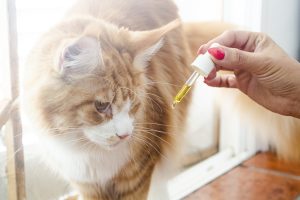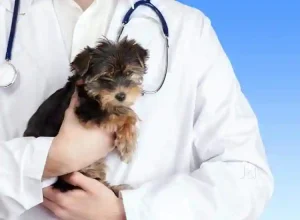Obviously, no dog has “minty fresh” breath, but your dog pal shouldn’t stink up the house either.
Broken, decaying, or abscessed teeth, oral tumors, periodontal disease, gingivitis, diabetes, sinus infections, inflammation of the gums, renal illness, and gastrointestinal disorders are just a few of the possible causes of your dog’s foul breath.
This is by no means an all-inclusive list, but maybe it demonstrates that “curing your dog’s bad breath” is not a straightforward task. It’s going to need some detective work on your part. As a first step, we’ll use the trial-and-error method.
The cause of your dog’s momentary foul breath is probably simply something he ate. Keep an eye on what your dog is eating. Bad breath may be the effect of eating certain canned foods.
The same thing might happen if you consume raw meat. A dog’s breath will smell unpleasant if he has a habit of eating scraps from the trash can. If any of these seem like possibilities, try keeping your dog away from the trash and/or switching up his or her diet to see if it helps.
Squeeze a drop or two of lemon into your best friend’s drink if the problem is merely foul breath from something he ate.
After eliminating the possibility of dietary causes, you should look into other potential health problems. Bad dog breath is often caused by periodontal disease. Your dog’s teeth may become trapped with food just as yours can. Plaque forms when bacteria feed on decaying food.
This also occurs in human beings. Plaque is a thin, sticky film that forms on the teeth and gums of dogs. Just as in people, if plaque is left untreated, it can cause gingivitis, which may then lead to periodontal disease.
Brushing a dog’s teeth is a need for every dog. The easiest method to avoid this health problem and one of the finest ways to treat it while it’s still in its early stages is to have them brush their teeth twice a day.
Dogs may use a toothbrush designed for them, or you can use a human toothbrush with soft bristles. A finger brush, a rubber sleeve with bristles that you slip over a finger, is another option to explore.
If your dog isn’t keen on being petted, you could have more success using a finger brush instead of a toothbrush. There shouldn’t be any resistance to having your dog’s teeth brushed throughout adulthood if you start doing it when he or she is a puppy.
Begin by letting the dog, any dog, smell and lick the toothpaste. Make the most of this situation. Don’t hold back on the compliments, and take things slowly. It’s possible that the first time you clean your teeth, you won’t get them all. Fun is more essential than anything else, so make sure you both remember that.
Forget about using human toothpaste. Dogs don’t enjoy the flavor and it shouldn’t be ingested. Dog toothpaste may be purchased or made at home.
Mix:
- Six Tablespoons Baking Soda
- The equivalent of two pinches of salt
- Add 4 teaspoons of glycerin.
- Two teaspoons of meat or chicken broth
For “minty fresh” breath, you may try giving your dog 2 teaspoons of peppermint essence, but there’s no promise he’ll appreciate it. Crushed sage leaves may reduce gum swelling in cases of gingivitis or other gum diseases.
Offer your pet appropriate chewing options. Tartar and plaque may be avoided with the use of dental chews, which can be bought for this purpose. Plaque may be effectively avoided by using dental chews like bones, rawhide, dried pig’s ears, etc. Choose your bones carefully; large shin and shank bones work best.
Never feed your dog a bone from a bird. Having your dog’s teeth professionally cleaned by a veterinarian is another option. Perhaps there’s a tooth that’s abscessed or very decaying and has to be pulled.
Seeking the advice of a Vet is your only option. Several other health problems, some of which we’ve previously mentioned, are possible causes of your dogs’ foul breath.
Your veterinarian must determine the cause of each of these conditions before providing treatment. Observe your pet closely and report anything out of the norm to your vet at this time.
Keep an eye out for signs like excessive drooling or the release of blood or other substances from the mouth. Is there mucus or snot coming out of your pet’s nose? Is his hand reaching towards his mouth? Is he unable to eat or just not interested? Is there any swelling in his face that you can see?
Make sure the back is being watched as well. Have you ever noticed whether your dog has diarrhea or constipation? Is he fluctuating?
To have an odor problem on both ends of your body spells serious concern. Does he seem to be itching something?
Do you think he prefers grass over his food? Is he throwing up? You should tell his vet about anything you see unusual about him.
Keep in mind that your dog has no means of communicating with you or asking for assistance if there is a significant medical problem. Don’t wait to take your pet to the vet if the problem of foul breath persists.






More Stories
Why a Dog Leash Adjustable in Length Is a Game-Changer for Walks and Training
Top Ingredients to Look for in Safe and Effective Dog Dental Wipes
How to Balance Dry Dog Food & Treats for a Healthy Diet